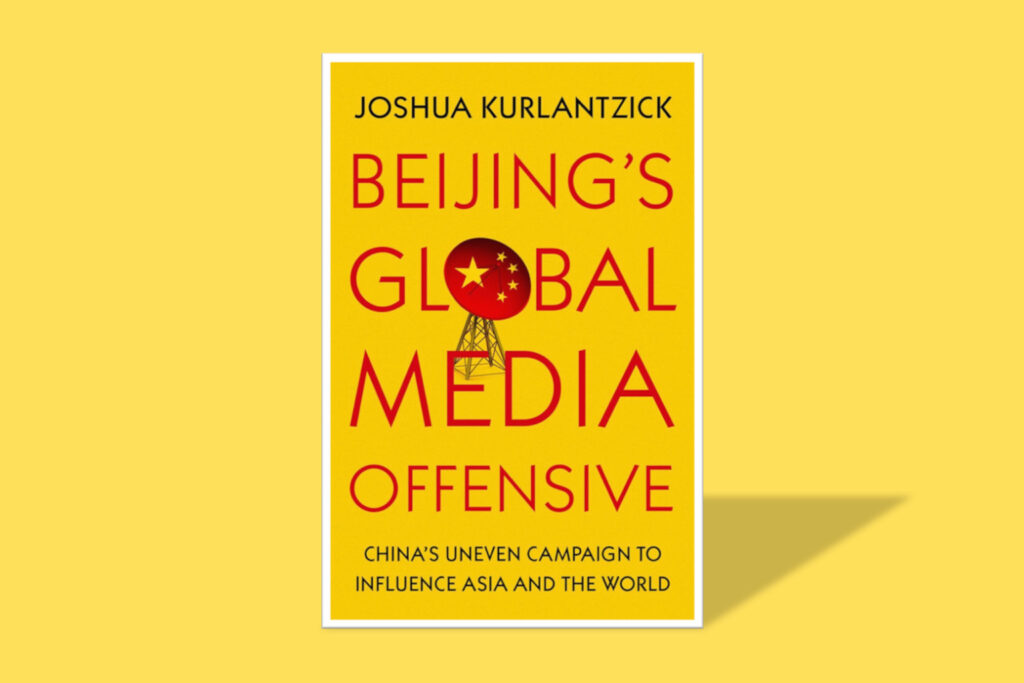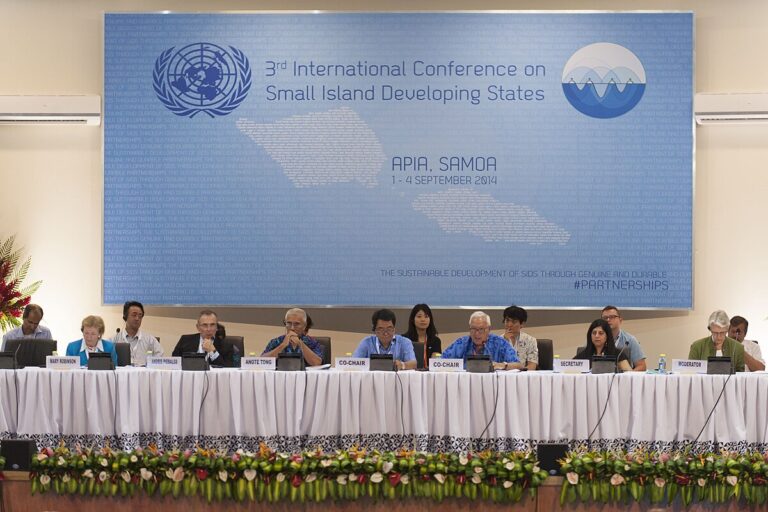Ahead of the 2023 BRICS Summit in South Africa, the front page of the Cape Times featured two different stories on China which highlighted Beijing’s multifaceted campaign to influence media and shape narratives around the world. The first was a so-called “advertorial” written by Xi Jinping himself: an opinion piece on the BRICS placed and paid for by the Chinese state, alongside a large picture of the Chinese president—one example of many paid editorials written by Chinese officials. The second was a promotion of a television series in which Xi shares wisdom from select quotations from the classical Chinese canon, which is set to run on a range of African broadcasters and has earned glowing praise from a South African TikToker—symptomatic of both the global popularity of China’s greatest social media export (TikTok) and an example of the content sharing deals Chinese media has on the continent. These stories are just two examples of the complex influence campaign at the heart of Joshua Kurlantzick’s fascinating book, Beijing’s Global Media Offensive: China’s Uneven Campaign to Influence Asia and the World.
But Beijing’s global media offensive isn’t limited to the Global South. Straddling academic, policy, and media worlds, Kurlantzick draws on examples from Zimbabwe to New Zealand, examining everything from headline scandals to in-depth university research, to provide the most comprehensive mapping of Beijing’s global influence campaign to date. In addition to proving an invaluable reference for Beijing’s influence tactics around the world, the book also provides innovative frameworks for thinking about China’s push for soft power, such as distinguishing between “soft” and “sharp” power and viewing telecom networks and cyber laws as “pipes of information,” before making concrete and actionable recommendations to policymakers.
Kurlantzick charts the staggering growth of Beijing’s international media presence, drawing on the key headline statistics on the expansion of Chinese state media. With 181 bureaus worldwide, Xinhua News Agency ranks behind the Associate Press and the BBC in terms of sheer presence in foreign countries, while CGTN’s over one-hundred million Facebook followers make it the most followed media company on earth.
The author goes beyond these figures, however, and draws on research into the impact of these pages and the legitimacy of their followers. A University of Sydney study found that Chinese state media social pages had less impact than those from the United States, despite the number of followers, and an investigation by Quartz found that very few of the follower accounts came from English-speaking countries and instead came from countries known to operate large click farms, such as Myanmar and Malaysia.
The book also provides the full story of Beijing’s influence campaigns in two of the most exposed developed countries—Australia and New Zealand—and compiles a list of suspicious political donations, sinecures for former politicians at large Chinese state-owned enterprises (SOEs), and lavish trips for Australian journalists.
Kurlantzick draws on research by Ann-Marie Brady, a specialist in Chinese politics at the University of Christchurch, to collate examples from New Zealand, such as the case of National Party member of parliament who received a $100,000 donation from a Chinese company before describing labour camps in Xinjiang as “vocational training centres.”
The author’s curation of such a comprehensive mapping of Beijing’s influence tactics is already a vital resource for policymakers—but the book also provides useful frameworks for categorising and theorising on these tactics.
The division of soft power from “sharp power” provides a useful distinction used throughout the book. Kurlantzick draws on Christopher Walker and Jessica Ludwig’s concept of sharp power to separate commonplace soft power tactics from more covert and nefarious sharp power tactics. For example, Australian journalists given tours of China represents a typical use of soft power, and Kurlantzick notes similar tours take place across the Western world. In contrast, sharp power might include donations made to politicians and political parties to buy their support for Chinese government rhetoric, as these donations are not intended to be public knowledge and the support from politicians is intended to appear genuine.
Returning to his analysis of Chinese state media, Kurlantzick quotes notable China journalist James Palmer, who once worked for Chinese state media in Beijing, stating that: “there were two possible models for a station like CGTN…. Al Jazeera and Russia Today.” This becomes a theme for categorising China’s global media activity throughout. Outlets like Xinhua and CGTN attempt to copy Al Jazeera’s model and be taken seriously as a legitimate global news source, while outspoken state affiliated media outlets like Global Times pursue more provocative and antagonistic narratives like RT.
In the book, Kurlantzick introduces the concept of “controlling the pipes” of information. He writes about China’s role in the physical infrastructure of information, like undersea cables and telecom networks, and the intangible rules and norms for governance of information, such as cybersecurity laws. He notes the potential influence China can have on the flow of information as the dominant player in the construction of fibre optic networks across the Global South, as well as the influence of China’s governance model on countries who may choose to copy their laws on control of the internet and the media.
Such frameworks not only help the reader to understand and contextualise the multitude of examples from within the book but will also provide readers with the theoretical tools to understand China’s influence campaign going forward.
As well as mapping and analysing Beijing’s global influence campaign, the author also provides a catalogue of existing policies taken to counteract Beijing’s efforts, predominantly in Australia and New Zealand, before offering his own policy recommendations.
With respect to Australia, Kurlantzick argues that Australia’s legislation on foreign influence efforts offer “a model for raising awareness of foreign influence in politics and combatting it.” This wave of legislation included a ban on political donations from foreigners and revamped anti-espionage laws. Australia’s response also included more granular intervention, including clear guidelines for universities on interacting with Chinese entities and a China Defence Universities Tracker.
Through his recommendations, Kurlantzick focuses on clear and actionable policies, suggesting that countries set up task forces specifically focused on the United Front Work Department, require full disclosure of any foreign funding above $50,000 for political or academic institutions, and create anti-coercion instruments based on the EU’s support for Lithuania following China’s sanctions against the small European state.
While readers eager for a tougher stance among Western countries on China will appreciate the book’s exploration of Chinese influence abroad, they may be disappointed by some of the less hardline responses the author sets forth. For example, Kurlantzick falls short of calling for a ban on either Confucius Institutes (China’s controversial language and cultural learning centers that operate in schools and universities around the world) or TikTok, two of the most politically divisive Chinese entities in the US. In the case of Confucius Institutes, Kurlantzick again draws on academic research from Assistant Professor Naima Green-Riley of Harvard University, showing that Confucius Institutes do not necessarily advance Chinese government rhetoric at U.S. academic institutions; and in the case of TikTok, he argues that such a ban would simply widen the digital divide between China and the West.
The policy recommendations make clear that the book is ultimately addressed to Western policymakers, and specifically U.S. policymakers. This may disappoint readers or policymakers from countries outside the West who face a similar challenge of managing Chinese influence.
While Beijing’s Global Media Offensive was published less than a year ago, global events are already confirming that the book is essential reading for understanding the complex role of Chinese media in global politics. New research shows that TikTok has become the biggest source for news in Kenya, even as it is banned in neighbouring Somalia.
For policymakers today, however, the key message of the book remains the same, best summarised in the book’s final subheadings: “Get Your Own House in Order,” “Stand Up for the Free Press,” and “Bolster Democracy Itself.” In short, resilience against Chinese influence is important—but demonstrating the strength of free and open democracies is even more critical.
References
Joshua Kurlantzick, Beijing’s Global Media Offensive: China’s Uneven Campaign to Influence Asia and the World (Oxford: Oxford University Press, 2022)
The Cape Times (@CapeTimesSA). 2023. “In your Cape Times today: • Khayelitsha rape survivor ‘robbed of justice’ • Proposed new Marriage Bill comes under scrutiny • Oscar Pistorius turns to Concourt.” Twitter, August 21, 2023, 12:45 AM. https://twitter.com/CapeTimesSA/status/1693484546354823310
Nic Newman, Richard Fletcher, Kirsten Eddy, Craig T. Robertson, and Rasmus Kleis Nielsen. Reuters Institute Digital News Report 2023 (Oxford: Oxford University Press, 2023). https://reutersinstitute.politics.ox.ac.uk/digital-news-report/2023




